
How Then Should We View the Children?
One of the more difficult questions to settle--both from a biblical and historico-theological perspective--is that which concerns how we are to view the children of baptized, professing believers. On one hand, we can be quite sure that the children of professing believers are, no less than the children of unbelievers, "by nature, children of wrath" and heirs of the fallen Adamic nature--as the Apostle Paul affirms in Eph. 2:1-4, Rom. 3:9-20 and Rom. 5:12-19--under God's curse and thoroughly deserving of His wrath. However, on the other hand, we know from the same Apostle that the children of professing believers, who are nurtured in the pale of the church--whether Old or New Covenant--have unique privileges (e.g. see Rom. 3:1-6, Rom. 9:1-4 and Hebrews 3:1-6) and "would be unclean (lit. pagan) but are now holy" (i.e. set apart, in some sense) according to 1 Cor. 7:14. So how are we to reconcile these two truths that are so plainly taught in Scripture? A brief survey of the Westminster Standards may help shed some light on this subject for us.
The Standards teach that God made the Covenant of Grace with the elect (see WCF 7.3 and WLC 31). However, in Westminster Confession of Faith (WCF) 25.2 we read, "the visible church . . . consists of all those throughout the world that profess the true religion, and of their children, and is the kingdom of the Lord Jesus Christ, the house and family of God, out of which there is no ordinary possibility of salvation." Then, in WCF 28.1 the Divines write, "Baptism is a sacrament of the New Testament, ordained by Jesus Christ, not only for the solemn admission of the party baptized into the visible Church; but also to be unto him a sign and seal of the covenant of grace..." Finally, in WCF 28.4 we are told that professing believers and their children are to be baptized into the covenant. It is abundantly clear that "covenant" is used interchangeably with "visible church."
Baptism is the sign of the "covenant." In this way we see that the Westminster Standards teach that--in one sense--God's covenantal arrangement includes more than just the elect. Yet, the Divines stated clearly that the Covenant of Grace was made with the elect (WCF 7.3; WLC 31). So, what are we to make of these statements? Do the Westminster Standards contradict themselves? If not, how are we to understand these seemingly contradictory statements?
It would be odd (to say the least) for us to conclude that 119 of the best theologians in the history of the church, meeting in over 1100 sessions, would not catch such an obvious seeming contradiction--but that we would catch it. In an attempt to harmonize these statements, some have suggested that the Divines are saying that "believers and their children" (WCF 25.2) are synonymous with the "elect" (WCF 7.3 and WLC 31). However, that flies squarely in the face of what we read in WCF 28.5 as well as in the remainder of the writings of individual members of the Assembly. WCF 28.5 states, "Although it is a great sin to contemn or neglect this ordinance [baptism], yet grace and salvation are not so inseparably annexed unto it, as that no person can be regenerated, or saved, without it: or, that all that are baptized are undoubtedly regenerated." It is impossible to read the last clause of this statement in a way that supports a view that all baptized individuals are "elect" or "regenerate." While many hypercovenantalist insist that we must read the Standards in this way, a systematic reading of the Standards will not support such a reading.
So, the Standards teach both that God made the Covenant of Grace with the elect (see WCF 7.3 and WLC 31), and that it "consists of all those throughout the world that profess the true religion, and their children' (per WCF 25.2)." The way in which we are to reconcile these two statements is to view the Covenant of Grace from its eternal and historical aspects. If we view it from its eternal aspect, we must conclude that it is made with the elect--and only with the elect; however, when we look at it from the historical outworking, we must conclude that it is made with professing believers and their children.
As to the eternal aspect of the Covenant of Grace, we must say that God chose the elect in Christ according to His eternal decree (Eph. 1:4). Only those whom the Father chose in the Son will be with Him in glory (John 17). If we are considering what the Standards teach about who is included in the eternal aspect of the Covenant of Grace we turn to WCF 7.3 and WLC Q. 31. However, if we wish to understand what the Standards teach regarding the outworking of the Covenant of Grace in time we turn to WCF 25.2. We might call these two phases of the Covenant of Grace.
These two phases (or stages) of the Covenant of Grace are taught everywhere in the unfolding of redemptive history. One only need to read any of the 17th century Covenant theologians to come across the language of "external and internal sides of the covenant" or the "essence and administration of the covenant" to see that God is a God who worked covenantally in time with professing believers and their children. Whether it is seen in God's dealings with Noah and his children (one of whom apostatized), Abraham and his children (at least one of whom apostatized), Jacob and his sons (several of whom apostatized) or David and his children (several of whom also ended up apostate), in the Old Covenant era, God was everywhere attesting to the fact that He is a God who binds Himself to the family.
This principle of God's covenanting with families is further developed in the New Testament by Christ's choosing brothers to be disciples, the healing He provides for Simon Peter's mother-in-law or the way He receives and gives a covenant blessing to the children whose parents brought them in faith to Him--the Covenant Lord--so late in His ministry. It is also seen in the words of Peter immediately after Pentecost, "the promise is to you and to your children." If you were a Jew living during the inter-testamental period (the transitional period between the Old and New Testament), having rejected the Messiah, and now His Apostles come and call you and other apostate covenant members to repent and believe in the One who fulfilled all things in the New Covenant, one of the first questions you would ask is "What about my children?" In the Old Testament the covenant members were saved by faith in the coming Christ (Gen. 3:15; John 8:56-58; Acts 2:30-31 and Hebrews 11:25-26). The children of Old Covenant members were themselves members of the covenant and had special promises to be nurtured in the covenant by the God of the covenant. They needed to personally repent of their sins and believe the Gospel, but Paul tells us regardless of whether they believed or not they had enormous external privileges (Rom. 3:1 ff.). In the New Covenant, God continues to work in families. This is seen in the household baptisms mentioned throughout the book of Acts, as well as in the address of the Apostle Paul to "children" in the book of Ephesians ( 6:1). Ephesians is especially instructive since it is written to the visible church made up of professing believers and their children. We know this because Paul explicitly addresses the children, and he issues a call those who are unregenerate among then to be converted to Christ: "Awake you who sleep, arise from the dead and Christ will give you light." While so much more can be said, this will suffice to show that the pattern of Scripture is a pattern of God's covenant dealings with families.
Visible/Invisible Church Distinction
When the writers of the Westminster Standards speak of the church they speak of it under two headings--the visible and the invisible church. The "visible church," they write, "is a society made up of all such as in all ages and places of the world do profess the true religion, and of their children" (WLC 62). It is the visible manifestation of Christ's Kingdom in the world. The Divines then procede to to explain where this "visible" church is found:
Unto this catholic visible Church Christ has given the ministry, oracles, and ordinances of God, for the gathering and perfecting of the saints, in this life, to the end of the world: and does, by His own presence and Spirit, according to His promise, make them effectual thereunto. This catholic Church has been sometimes more, sometimes less visible. And particular Churches, which are members thereof, are more or less pure, according as the doctrine of the Gospel is taught and embraced, ordinances administered, and public worship performed more or less purely in them. The purest Churches under heaven are subject both to mixture and error; and some have so degenerated, as to become no Churches of Christ, but synagogues of Satan. Nevertheless, there shall be always a Church on earth to worship God according to His will (WCF ch. 25. sec. 3-5).
In contrast, the invisible church (which is not all those who are on the rolls but don't come to church on Sunday) "is the whole number of the elect, that have been, are, or shall be gathered into one under Christ the head" (WLC 64). These two expressions of Christ's church reflect to some degree the difference between the Covenant of Grace in time (visible church) and eternity (invisible church). While the invisible church (i.e. the elect who come to a saving knowledge of the Lord Jesus Christ) exist in the church of God in time, they and they alone make up the eternal church of God. They are the ones whose names are written in the book of life. It is clear when we read the epistles and especially Jesus' letters to the seven churches in the book of Revelation that the church is always a mixed multitude in time. There will always be wheat and tares in the visible church until the consumation. The writer of the letter to the Hebrews clearly acknowledges this when he warns about the reality of apostatizing from Christ and the church. The apostle John talks of those who "went out from us but were not of us." They had been members in the visible church but they were not of the invisible church of God. They were not elect. This does not mean that we welcome anyone into membership in a local church irrespective of whether they profess faith in Christ and acknowledge their need for repentance of sin. But, it does show that there is no perfectly pure church on earth (something that most of my baptist friends essentially must argue for when they argue against children in the visible church).
How Then Should We View the Children?
How then should we view our children, if they are members of the visible church? In many respects, this is the million dollar question. Should we consider them to be regenerate members of Christ's church (as hyper-covenantists view them)? Or, do we view them as all unregenerate (as most Baptists would view them)? It seems to me that there is a via media between the hyper-covenantist and Baptist positions. We know that covenant children--as all children--are unregenerate by nature. We also know that God has given them promises and set them apart for Himself (1 Cor. 7:14). This does not mean that they are necessarily internally holy. 1 Cor. 7:14 may simply mean that they are set apart to be nurtured by God in the visible church. They are nurtured by the word of truth, the promises, the warnings, the discipline of godly parents (Rom. 3:1-2; Rom. 9:1-4), the external blessings of coming under Christ's rule. They may be regenerated as infants, or they may--as was the case in my life--come to saving faith in Christ as an adult. Still, though many paedobaptists do not like to come to terms with the fact, they may--like most of Israel in redemptive-history--never come to saving faith in Christ. We do not have to choose between viewing our children as necessarily regenerate or as necessarily unregenerate. We raise them to be disciples of Christ in His visible church and we look for fruit throughout their lives--as we do in our own lives. If they do not show signs of saving faith at a particular stage of their growth, we may come to the conclusion that they do not know Christ. However, we always hold the promises and warning before them, give them the Gospel and encourage them to continual faith and repentance. This is a subject that can, in no way, be adequately be tackled in a blog post due to the fact that there are many other related subjects with which we must deal (e.g. children and the Lord's Supper, children and church discipline and the relationship between children and godly parenting). I do hope, however, that this will stir the interests of some to further study this all-important subject and I would recommend that everyone take time to study the historic roots of Covenant Theology. I heartily recommend the following books for further study and consideration:
1. William Strong Discourse on the Two Covenants
2. Stuart Robinson's The Church of God
3. John L. Giradeau The Federal Theology
4. Carl Bogue Jonathan Edwards and the Covenant of Grace
5. WJE Online Jonathan Edwards' references to the Covenant of Works
6. Cornelius Venema Children at the Lord's Table
7. Guy Prentiss Waters and Ligon Duncan ed. Children and the Lord's Supper
8. J. Mark Beach Christ and the Covenant: Francis Turretin's Federal Theology as a Defense of the Doctrine of Grace
9. Jonathan Neil Gerstner The Thousand Generation Covenant
Christward Collective is a conversation of the Alliance of Confessing Evangelicals. It is supported only by its readers and gracious Christians like you. Please prayerfully consider supporting Christward Collective and the mission of the Alliance.

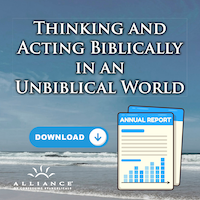
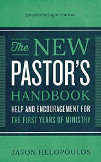
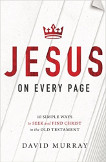
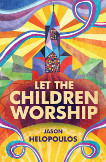
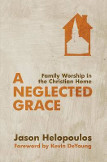













 © Alliance of Confessing Evangelicals
© Alliance of Confessing Evangelicals


